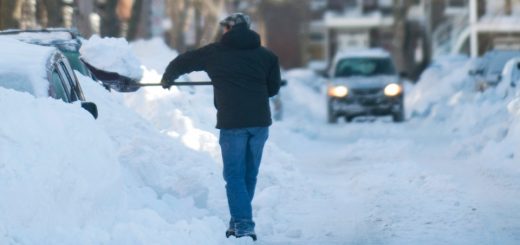Are you an avid walker? Do you dread winter because you do not walk as much when it is cold outside? Have you decided you will walk regardless of the temperature or weather conditions? Winter weather should not prevent you from enjoying walking outside, provided you take precautions to reduce your risk of falling when winter walking.
Can You Avoid Falls When Winter Walking?
Seniors have a higher risk for falls, without taking into consideration the risks of walking in winter weather. However, everyone, regardless of age, need to take precautions for winter walking. We can all benefit from remembering the following safety tips for winter walking:
- Choose the right clothes for winter walking. You need to wear warm clothing that allows you to move freely. You also need to wear clothing that protects your hands, face, and head, so do not forget your gloves, scarf, and hat. Dressing in layers can help keep you warmer. Lastly, make sure that you have the right shoes for winter walking. A pair of winter boots that are waterproof, warm, and have non-slip tread on the soles will give you the traction and protection you need.
- Use something to help with balance and stability. You definitely need something to help you walk on snow or icy surfaces if you have any problem with balance or weakness. Canes, ski poles, walking sticks, and walkers can provide the support you need when walking on snow or ice-covered surfaces.
- Wear brightly colored clothing. This tip applies to all pedestrians, regardless of the season or weather conditions. You need to make sure that drivers and others can see you as you are walking. You can also add reflective tape or material to your coat to help increase visibility.
- Use hip protectors. Hip protectors can give you added protection against hip fractures if you should fall while you are walking outside during the winter.
- Take your time. You should not be in a rush when winter You need to slow down, take small steps, shuffle over icy patches, and focus on keeping your balance with each step.
- Carry a small bag of material for traction. Sand or cat litter can help you avoid a fall if you encounter a particularly icy patch of the sidewalk or pathway. Sprinkle the substance on the icy surface to help provide traction when you walk across.
- Avoid ice, whenever possible. Walking on snowy surfaces can be challenging, but walking on ice is extremely difficult and dangerous. If you must walk on ice, you should slow down and keep your knees and body loose. Spreading your feet further apart and holding out your arms can also help you balance when walking.
- Plan your route carefully. Even though it might be beautiful to walk through a secluded area, it can be very dangerous. If you fall, you might not be able to get help. Try to choose a route which keeps you near businesses, homes, or other places where people are likely to be out walking. If you do walk in a secluded area, make sure that you walk with other people and carry a fully charged cell phone.
Our lawyers hope everyone stays safe when walking, especially when winter walking. If you fall because of snow or ice on walkway or parking surfaces, the property owner could be responsible for your damages in some circumstances. We encourage you to contact our office for a free consultation with one of our Ontario premises liability lawyers.
Call an Ontario Premises Liability Lawyer for a Free Case Evaluation
You can reach Diamond and Diamond to speak to someone now by calling 1-800-567-HURT. Our experienced team of lawyers can help you file a claim to hold the property owner liable for your injuries and damages. Negligent property owners should be held accountable when they do not meet the standard of care for safe premises.







